
Cathedral of Santa Maria del Fiore
Location: Florence, ITALY
Built: Construction started in 1296 and open on March 25, 1436
How long to build: 140 years
Architectural Style: The architectural style of this cathedral is Gothic and Renaissance. The outside is covered with geometric patterning made from marble and brick. Inside it has wide open bays with smaller windows that other Gothic churches of the time.
Features:
- Santa Maria Del Fiore was built on top of a small church.
- The Cathedral has the largest masonry dome in the world which is a hollow half sphere.
- The man who designed and built the domed rooftop of Santa Maria Del Fiore, Fillipo Brunelleschi, had not had any architectural training. He also did not leave any notes on how the dome was constructed.
- Santa Maria del Fiore means Saint Mary of the Flower and was nicked named the Duomo after the huge octagonal dome. The dome is made up of two domes. The inner dome is marble and sandstone and the outer dome is made of brick in a herringbone pattern. There are no supports holding the dome up.
- In 1401, a competition was held to design the famous bronze doors, now known as ‘The Gates of Paradise’ (pictured), on the Baptistery in front of the cathedral. The bronze doors are 17 feet tall and show scenes from the Old Testament. Lorenzo Ghiberti designed the doors.
- A copper ball and cross at the top of the dome contained holy relics. It was designed and engineered by Andrea de Verrocchio and his assistant, Leonardo da Vinci, in 1469.
History: This is the home church of the Roman Catholic Archdiocese of Florence. Although constructions started in 1296, the dome was not completed until 1436. That means that the east end of the church was open to the weather for over 100 years.



Cologne Cathedral
Location: Cologne, GERMANY
Built: Construction started in 1248 and finished in 1880
How long to build: 632 years
Architectural Style: The architectural style of the Cologne cathedral is Rayonnant Gothic (the period from about the mid-13th century to mid-14th century). It was built of trachyte rock from the Drachenfels in Germany. Sandstone was used in the 19th century.
Features:
- The Cologne Cathedral is the largest Gothic church in Northern Europe.
- The Cologne Cathedral has twin towers that stand at approximately 157m and 151 m high.
- Behind the altar made of black marble, are the choir stalls, which were carved from 1308 to 1311. The 104 seats make it one of the biggest surviving medieval choir stalls in Germany.
- The choir first sung in the cathedral in 1322 and the first bell was rung in 1410.
- There were many colourful stained-glass windows throughout the cathedral. An example is the window Petrus- und Wurzel Jesse-Fenster dating back to 1509. (pictured)
- The Cathedral was designated a UNESCO World Heritage Site in 1996.
- In the transept (a cross-shaped church, the two parts forming the arms of the cross shape, projecting at right angles from the nave) is a modern bronze altar that was created by Elmar Hillebrand between 1960 and 1971.
History: The cathedral was built to house the relics of the Three Wise Men’s shrine. In 1510, the building of the cathedral stopped because people had lost interest in it. For the next 300 years the cathedral remained unfinished but was completed in 1880 using the original plans.
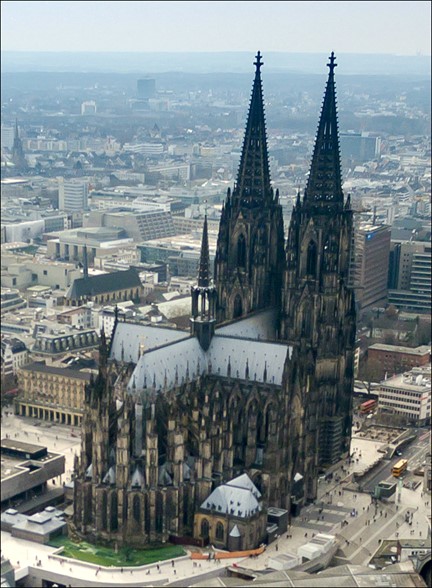
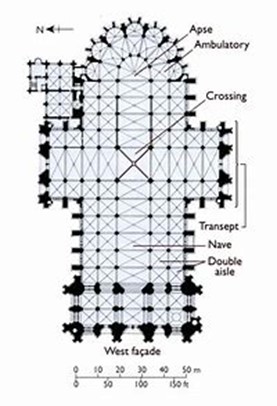
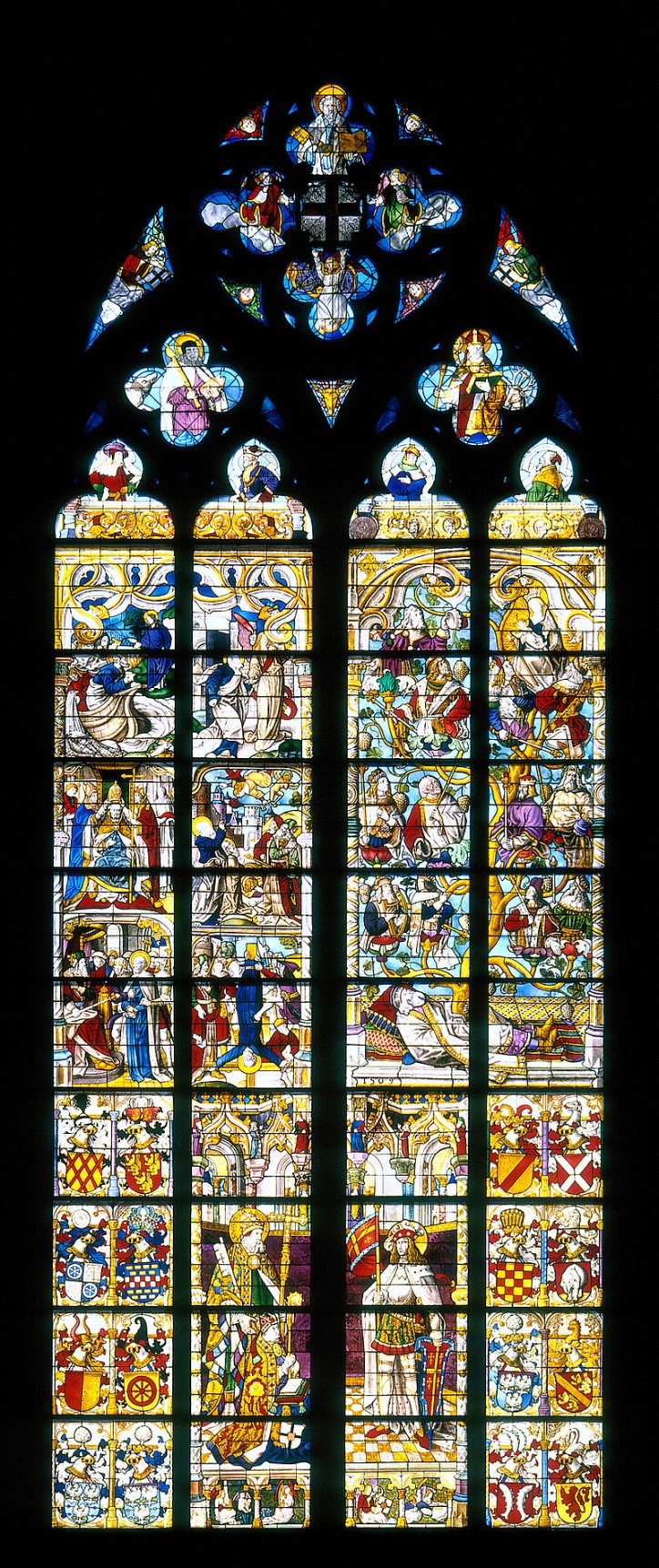
St. Stephen’s Cathedral
Location: Vienna, AUSTRIA
Built: Construction started in 1137 and finished in 1433
How long to build: over 296 years
Architectural Style: The outside of the cathedral is Romanesque architecture of limestone walls while the inside of the St. Stephen’s cathedral is a Gothic style with Gothic columns to support the roof.
Features:
- The St. Stephen’s Cathedral has an ornately patterned mosaic roof. The 111m long roof structure is covered by 230,000 coloured glazed tiles.
- Above the choir stalls on the south side of the building the tiles form a mosaic of the double-headed eagle that is symbolic of the empire ruled from Vienna by the Habsburg dynasty.
- The spire reaches 136 m in height.
- The main entrance to the church is called the Portal of the Giant. It is decorated with saints, geometric relief and figures of animals. Above the entrance are the two original Romanesque towers that are 65m tall.
- Inside the cathedral is the tomb of Emperor Frederick III.
History:
The original church stated construction in 1137 on an Ancient Roman cemetery and finished in 1160. However, it was burned down by a fire in 1258.
The church was rebuilt using two remaining towers and the 136m northern tower was completed in 1433.
The cathedral was saved from bombing during World War II. However, in April 1945 civilians protesting the invasion of the Soviet Army set fire to shops in Vienna’s historic centre and it spread to the cathedral’s roof. The roof collapsed but artifacts survived, including the Frederick III’s tomb. The Cathedral was restored after the war.

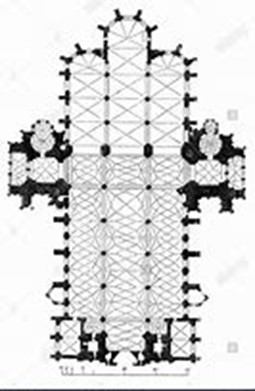
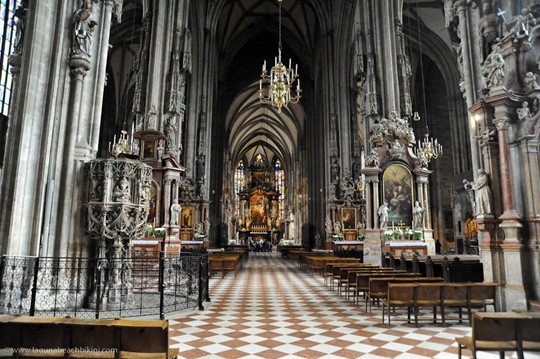
Published: Aug 30, 2021
Latest Revision: Aug 30, 2021
Ourboox Unique Identifier: OB-1198170
Copyright © 2021








